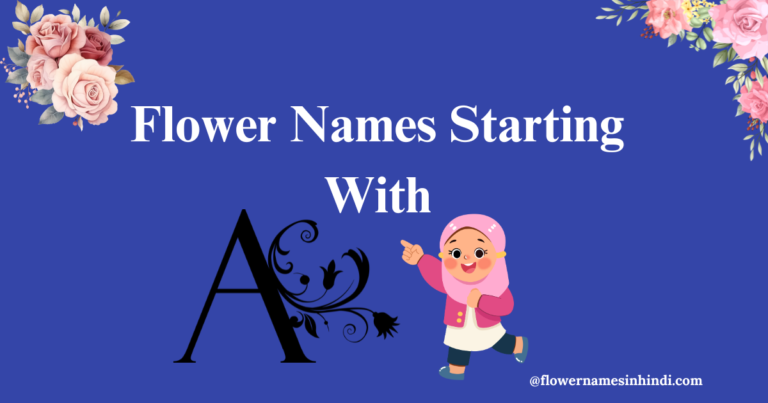16+ Beautiful Flowers Beginning with Y With Pictures
Exploring flowers beginning with Y is an exciting way to discover plants you may not see every day. These blossoms bring unique colors, shapes, and charm that can brighten any garden or bouquet. Some are bold and eye-catching, while others are delicate and rare, but each carries its own beauty.
From cheerful garden favorites to lesser-known wonders, Y-named flowers add both variety and character to outdoor spaces. Whether you enjoy gardening, decorating, or simply learning about nature, these flowers are sure to spark your curiosity and inspire your love for plants even more.
Let us explore together:
💛 Yellow Bell
💛 Yellow Archangel
💛 Yellow Coneflower
💛 Yellow-Eyed Grass
💛 Yellow Flag Iris
💛 Yellow Oleander
💛 Yellow Wild Indigo
💛 Yarrow
💛 Yellow Bellflower
💛 Yellow Mariposa Lily
Yellow Canna
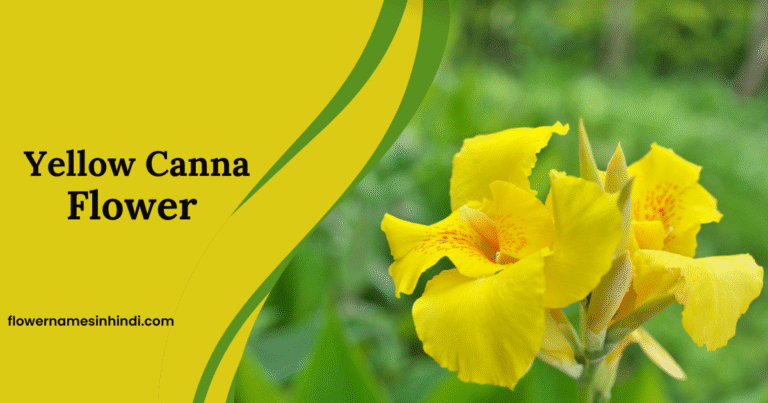
Yellow canna, also called Indian shot, African arrowroot, tasty canna, or purple arrowroot, belongs to the Cannaceae family. This tropical plant grows tall with large, bright yellow flowers and wide paddle-shaped leaves that can be green or variegated.
People have grown yellow canna for its beauty, but some species also have edible rhizomes used in traditional dishes in Asia and South America. The flowers attract hummingbirds and butterflies, making it perfect for wildlife gardens. The plant usually stays healthy but may face pests like leaf rollers, so checking it often is helpful.
Yellow canna rhizomes have been used to make biodegradable starch films, which researchers are studying as eco-friendly alternatives to plastic packaging.
| Botanical name | Canna indica |
| No. of species | Over 20 species in the genus |
| Symbol | Beauty, vitality, and rejuvenation |
| Blooming time | Summer to early autumn |
| Origin/ Native to | Tropical and subtropical regions of the Americas |
Yellow Coreopsis: Flowers Beginning With Y
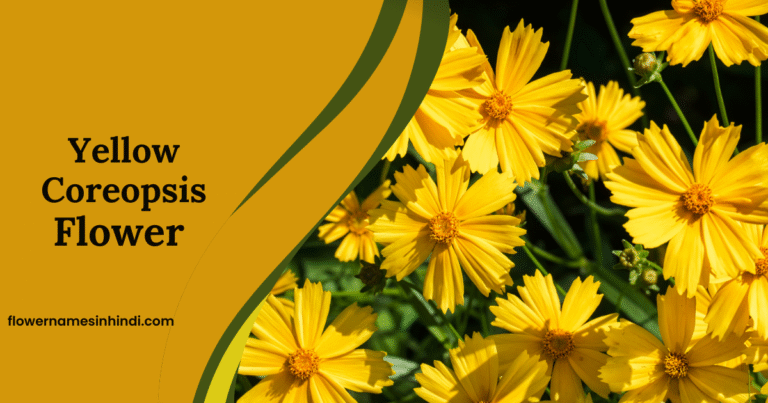
Yellow Coreopsis is a cheerful perennial with bright yellow, daisy-like petals and reddish-brown centers. It blooms all summer and lights up garden beds, borders, and meadows. Its fine, threadlike leaves add extra texture to the plant.
This plant grows best in full sun and well-drained soil. It tolerates drought, resists pests and diseases, and needs very little care once it settles in. Regular deadheading encourages more flowers and keeps the plant from spreading too much.
| Botanical name | Coreopsis species |
| No. of species | Over 80 species in the genus |
| Symbol | Cheerfulness, love, and optimism |
| Blooming time | Late spring to fall |
| Origin/ Native to | North America |
Yellow Tulip
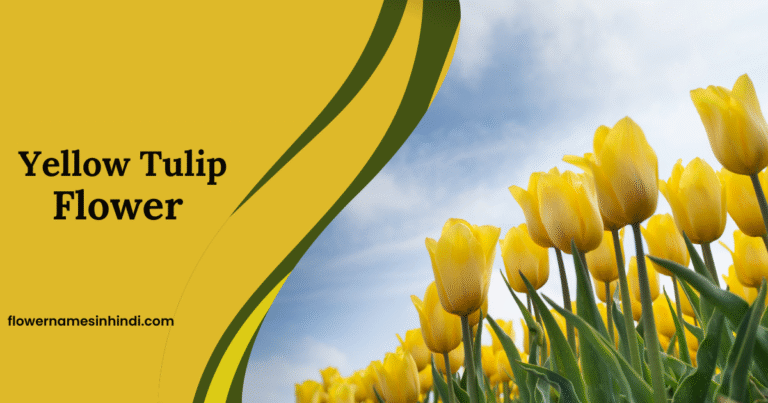
Yellow tulip is a classic spring flower with bright, cup-shaped blooms held on tall, slender stems. Its wide, lance-shaped leaves create a fresh green backdrop for the flowers.
Centuries ago, tulips were so valuable that they caused one of the first economic crashes in history, known as Tulip Mania. Today, they symbolize love and passion and often appear in romantic bouquets.
Yellow tulips grow best in full sun and well-drained soil. Plant the bulbs in autumn, and they will bloom in spring. Water them regularly during growth, but avoid soggy soil, as it can cause the bulbs to rot.
Tulip petals are edible and were even used as a substitute for onions during food shortages in World War II. Some people also used them to thicken soups and stews.
| Botanical name | Tulipa |
| No. of species | About 75 species in this genus |
| Symbol | Cheerfulness, friendship, hope |
| Blooming time | Early to mid-spring |
| Origin/ Native to | Central Asia, widely cultivated in Europe and the Middle East |
Yellow Freesia: Flowers Beginning With Y
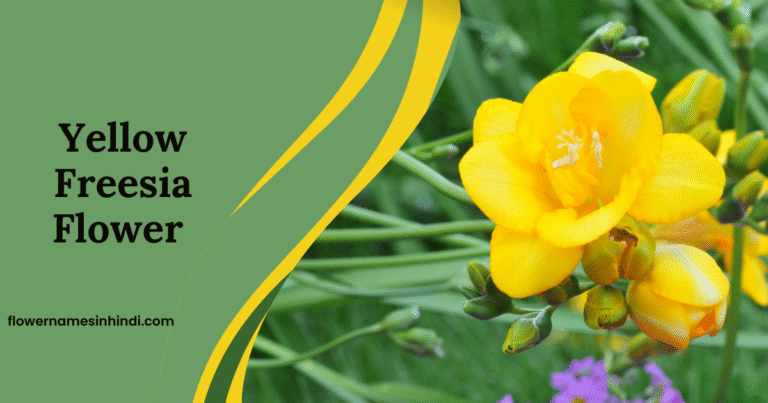
Freesia is a perennial plant from the Iridaceae family. It grows from small, cone-shaped corms and produces thin, grass-like leaves. Its stems branch out and carry loose spikes of six-petaled flowers.
Yellow freesia has delicate, funnel-shaped blossoms that release a sweet fragrance. The flowers can be yellow, white, pink, purple, or even multicolored. They grow on arching stems and look stunning in bouquets and centerpieces.
Yellow freesia grows best in full sun to light shade with well-drained soil. Plant the bulbs in autumn for a bright spring bloom. Water them regularly during growth, but avoid overwatering, as too much moisture can rot the bulbs. Protect the plant from frost, since its blooms are fragile.
| Botanical name | Freesia |
| No. of species | Approximately 16 species |
| Symbol | Friendship, trust, innocence |
| Blooming time | Late winter to spring |
| Origin/ Native to | South Africa |
Yellow Daffodil: Flowers That Begin With Y
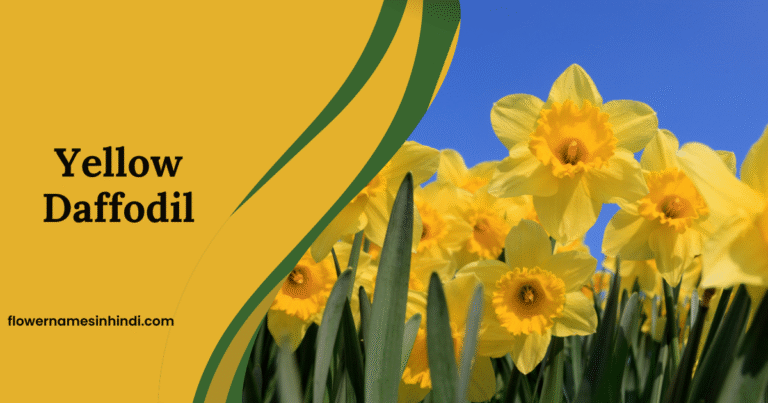
Yellow daffodils are among the most famous spring flowers, loved for their bright golden color. They belong to the Amaryllidaceae family and are also known as narcissus or jonquil. People have grown them since ancient times, and they have long symbolized renewal and fresh beginnings.
In many cultures, daffodils also represent good luck and play a role in spring festivals. However, the flower contains a toxin called lycorine, which makes it poisonous if eaten, so it must be handled carefully.
Daffodils are the national flower of Wales, but in China they are celebrated as a symbol of good fortune during the Lunar New Year, since they bloom right around that time.
| Botanical name | Narcissus |
| No. of species | Over 50 species and thousands of cultivars |
| Symbol | Rebirth, new beginnings, hope |
| Blooming time | Early to mid-spring |
| Origin/ Native to | Western Europe, particularly the Iberian Peninsula and North Africa |
Yellow Gladiolus
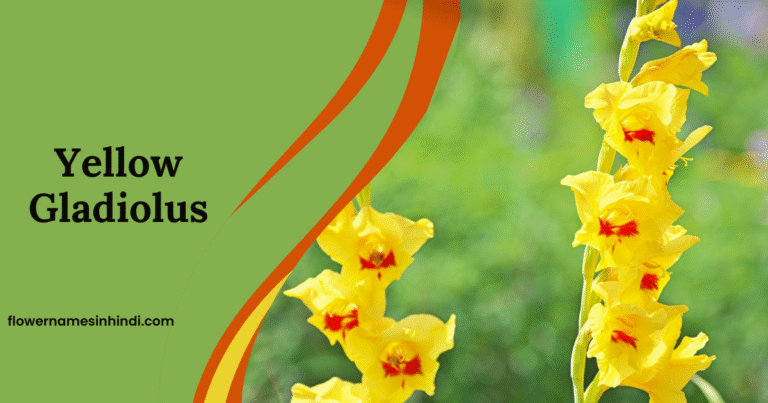
Gladiolus is a perennial plant from the iris family, named after the Latin word gladius, meaning sword. Yellow gladiolus stands tall with spikes of trumpet-shaped flowers and sword-like leaves. They grow from rounded corms wrapped in brown, fibrous layers. Its stems are usually straight and unbranched, carrying 1 to 9 long, grooved leaves shaped like swords.
This plant thrives in full sun and well-drained soil. It needs regular watering during hot, dry weather. Gardeners should watch for thrips, as these pests sometimes damage the plant. Checking the flowers often helps prevent serious infestations.
| Botanical name | Gladiolus |
| No. of species | About 300 species |
| Symbol | Strength, honor, moral integrity |
| Blooming time | Summer to early fall |
| Origin/ Native to | South Africa, Mediterranean, and parts of Europe |
Yellow Chrysanthemum
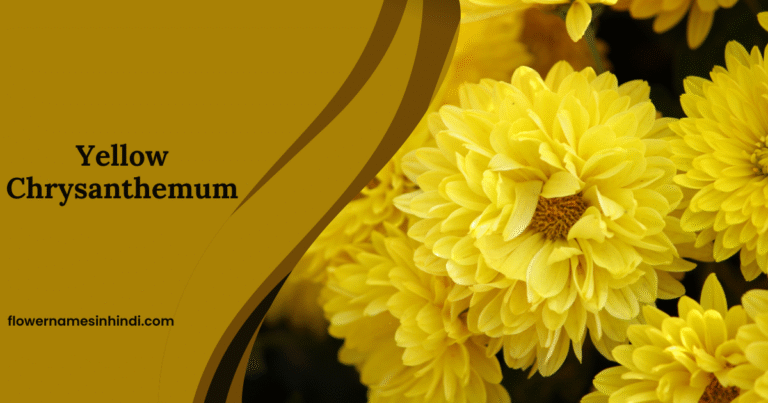
The name chrysanthemum comes from the Ancient Greek words chrysos meaning gold and anthemon meaning flower. People also call them mums or chrysanths. They belong to the family Asteraceae.
Yellow chrysanthemums often stand for friendship, joy, and goodwill. These flowers grow well in both garden beds and containers, which makes them a favorite of gardeners and florists. Yellow chrysanthemums need full sunlight and soil that drains well. Give them water and fertilizer during the growing season.
Chrysanthemum petals are edible and often used in salads, teas, and herbal remedies in East Asia.
| Botanical name | Chrysanthemum |
| No. of species | Around 14 species |
| Symbol | Friendship, joy, optimism |
| Blooming time | Late summer to fall |
| Origin/ Native to | Asia, particularly China and Japan |
Yellow Zinnia: Flowers Beginning With Y
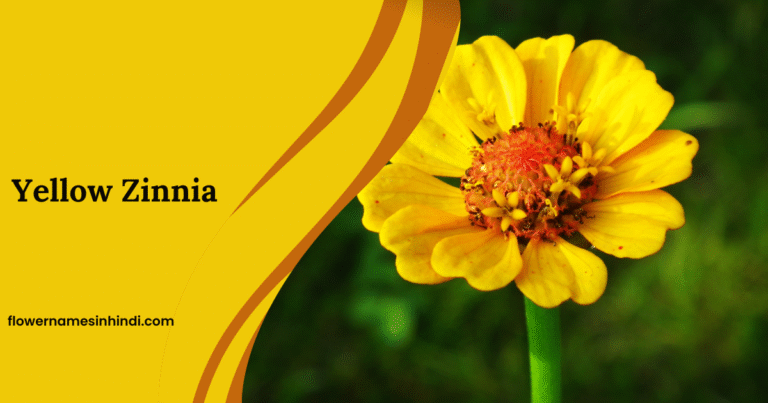
Zinnia belongs to the Asteraceae family. Yellow Zinnias bring a bright splash of colour to gardens and floral displays. They grow between 10 and 100 cm tall. These strong plants adapt well, love hot weather, and need very little care.
Yellow Zinnias look lively and cheerful with their bright shades and long-lasting flowers. The flowers stand out with their big, daisy-like shape in yellow, orange, and red. Their petals form in thick, round layers, giving them a full look. People often plant Zinnias in borders, flower beds, and cutting gardens to add colour and invite pollinators.
| Botanical name | Zinnia |
| No. of species | Over 20 species |
| Symbol | Endurance, friendship, and remembrance |
| Blooming time | Summer to early fall |
| Origin/ Native to | Mexico, Central America, and Southwestern U.S. |
Yellow Coneflower
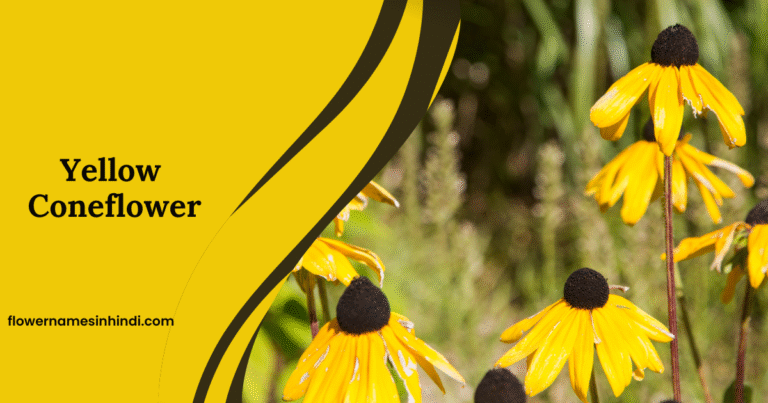
Yellow Coneflower belongs to the Echinacea group of flowering plants. It stands out with golden yellow petals and a cone-shaped centre. The name Echinacea comes from the Greek word ekhinos, meaning hedgehog, which refers to the spiny centre disc.
Yellow Coneflowers thrive in full sunlight and well-drained soil. Once established, they tolerate drought and need very little care. They resist most pests and diseases, which makes them a dependable choice for gardeners.
Echinacea was one of the first medicinal plants exported from North America to Europe in the 1800s.
| Botanical name | Echinacea paradoxa |
| No. of species | About 9 species in genus Echinacea |
| Symbol | Strength, healing, and endurance |
| Blooming time | Mid-summer to late summer |
| Origin/ Native to | Central United States, primarily Missouri and Arkansas |
Yellow Hibiscus: Flower Beginning With Y
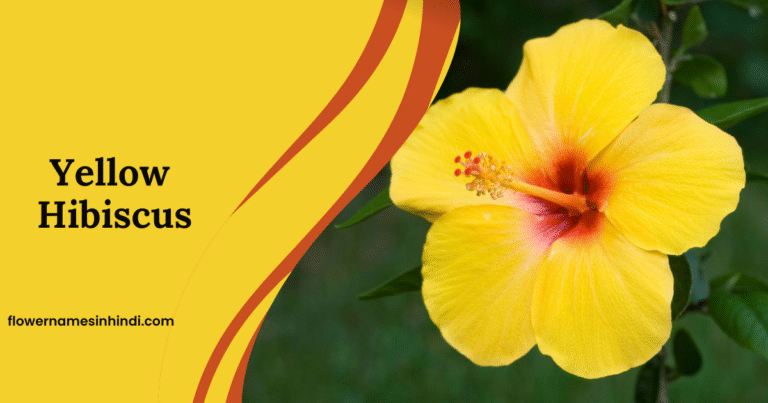
Yellow Hibiscus, also called rose mallow, belongs to the Malvaceae family. It grows best in warm and humid climates and is famous for its large, eye-catching blooms that can reach up to 6 inches wide.
This tropical beauty shows off bright yellow petals with a striking red or maroon center. The flowers usually have five soft, papery petals that make them stand out in any garden. Yellow Hibiscus loves full sunlight and well-drained soil. With regular watering and fertilizing, it grows strong and blooms heavily. Pruning helps it keep a nice shape and produce more flowers.
The Yellow Hibiscus (Hibiscus brackenridgei) is so rare that it is found only in Hawaii and nowhere else in the world. Because of this, it holds deep cultural pride as the official state flower of Hawaii. Sadly, it is also endangered in the wild, making every bloom a symbol of both beauty and resilience.
| Botanical name | Hibiscus brackenridgei |
| No. of species | Over 300 species in the Hibiscus genus |
| Symbol | Friendship, joy, and beauty |
| Blooming time | Year-round in tropical climates, peak in summer |
| Origin/ Native to | Hawaiian Islands |
Yellow Poppy
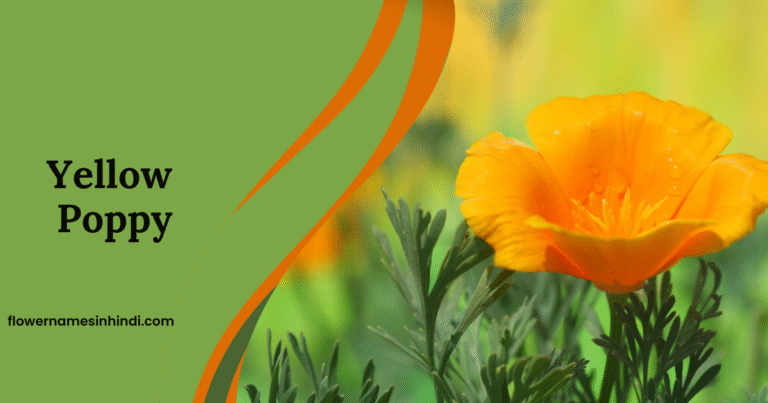
The Yellow Poppy is another flower that begins with Y and belongs to the Papaveraceae family. This delicate perennial has soft, papery, cup-shaped blooms in shades of yellow, orange, and white. The blue-green, finely divided leaves give the plant a feathery texture.
Yellow Poppies grow best in cool climates, sunny to partly shady spots, and well-drained soil. They need little care and bloom longer if you regularly remove faded flowers. Since the plant is delicate, protect it from strong winds. However, Yellow Poppies contain toxic alkaloids, so handle them with care. Gardeners often use them in rock gardens and alpine settings, where their bright blooms shine beautifully.
Yellow poppy flowers have traditionally been used to treat respiratory issues.
| Botanical name | Papaver nudicaule |
| No. of species | 70-100 species |
| Symbol | Rebirth, renewal, and optimism |
| Blooming time | Late spring to early summer |
| Origin/ Native to | Arctic regions, including Iceland and Greenland |
Yellow Allium
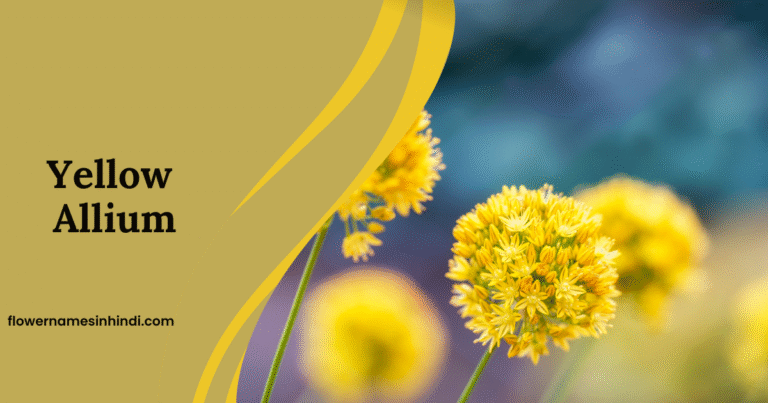
It is also known as yellow garlic and is part of the Amaryllidaceae family. It produces bright star-shaped yellow flowers in clusters, while its slim grass-like leaves create a soft contrast. This hardy plant adds cheerful color and texture to garden borders with little care.
Yellow Allium is a strong perennial that grows best in full sun and well-drained soil. It is low-maintenance and easy to care for once it is established. Plant the bulbs in autumn so they can grow roots before winter.
| Botanical name | Allium moly |
| No. of species | 600-920 species in the genus Allium |
| Symbol | Prosperity, abundance, and good fortune |
| Blooming time | Late spring to early summer |
| Origin/ Native to | Mediterranean regions |
Yellow Iris: Flowers Beginning With Y
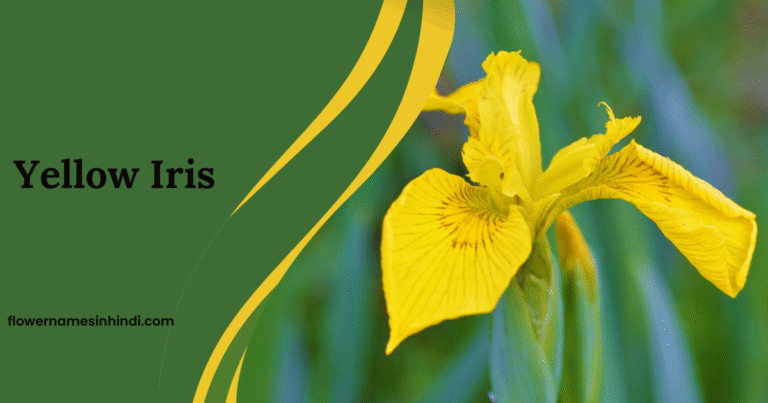
The Yellow Iris, also called the yellow flag or water flag, is famous for its bright yellow blooms and graceful look. It belongs to the Iridaceae family. The name pseudacorus means “false Acorus” because its leaves look like those of the sweet flag (Acorus calamus), with their sword-like shape and strong central vein. But the two plants are not closely related.
It grows best in damp or swampy places, making it perfect for water gardens. The plant does well in both sun and partial shade and adapts to most soils with good drainage. It needs little care, but it can spread quickly, so gardeners should divide and monitor its clumps regularly.
In medieval Europe, the Yellow Iris was often planted near water sources because people believed it could purify contaminated water. While it doesn’t actually clean the water, its roots can absorb pollutants, which is why today it is sometimes used in natural water filtration systems and constructed wetlands.
| Botanical name | Iris pseudacorus |
| No. of species | 310 species in the genus Iris |
| Symbol | Purity, strength, and renewal |
| Blooming time | Late spring to early summer |
| Origin/ Native to | Europe and parts of Asia |
Yellow Marigold
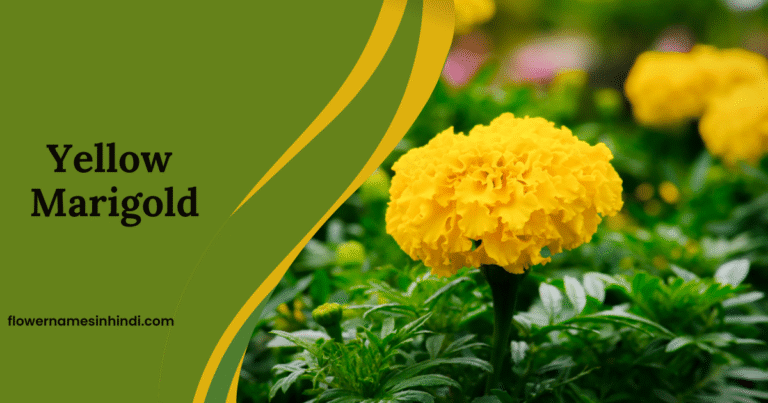
Yellow Marigold, also called African Marigold or American Marigold, belongs to the Asteraceae family. It usually grows between 0.1 and 2.2 metres tall. Most types have pinnate green leaves. The flowers appear in golden, orange, yellow, and white shades, sometimes with maroon touches.
Yellow marigolds grow quickly in full sun and well-drained soil. Once established, they tolerate drought and need little care. Farmers and gardeners also value them as companion plants because they naturally repel pests.
| Botanical name | Tagetes erecta |
| No. of species | About 50 species in the genus |
| Symbol | Passion, creativity, and warmth |
| Blooming time | Summer to fall |
| Origin/ Native to | Native to Mexico and Central America |
Yellow Jasmine: Flowers Beginning With Y
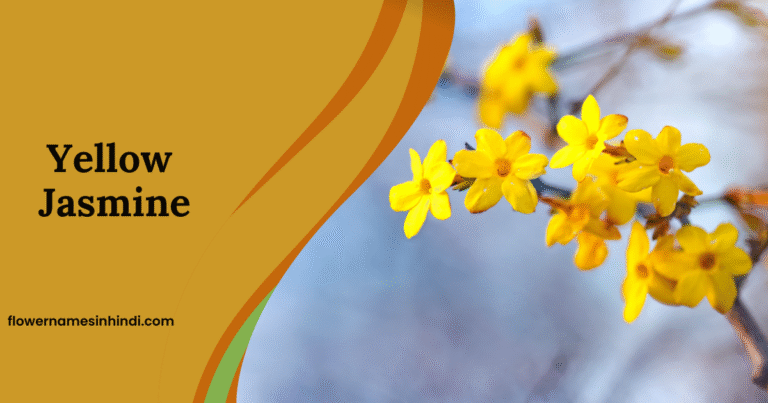
Yellow Jasmine, also called primrose jasmine or Japanese jasmine, belongs to the Oleaceae family. This evergreen shrub scrambles as it grows, reaching about 3 metres (10 feet) tall and 1–2 metres (3–7 feet) wide. In spring and summer, it produces sweetly scented yellow flowers, often in semi-double form.
Trimming not only keeps Yellow Jasmine in shape but also encourages more blossoms. However, you should handle this plant carefully because all parts are poisonous if eaten and can harm both people and pets in busy gardens.
People have long used Yellow Jasmine as a natural sedative. Its fragrant blooms can lift mood, and the plant is sometimes included in aromatherapy for its calming scent.
| Botanical name | Jasminum mesnyi |
| No. of species | Around 200 species |
| Symbol | Elegance, beauty, and renewal |
| Blooming time | Late winter to early spring |
| Origin/ Native to | China and parts of Southeast Asia |
Yellow Rose
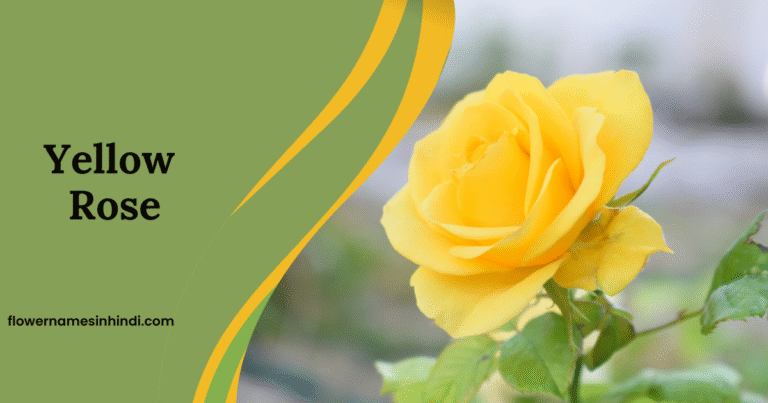
The Yellow Rose, one of the most famous roses in the world, belongs to the Rosaceae family. It comes in many shades, from pale yellow and lemon to deep golden tones. The flowers carry a pleasant fragrance and vary in size from single blooms to large, multi-petaled forms.
Like other roses, yellow roses grow best in full sunlight and well-drained soil. They need regular watering and fertilizing during the growing season. Pruning helps the plant stay healthy, keeps its shape, and encourages more blooms. However, pests and diseases can often affect them, so gardeners must stay alert.
In the Victorian era, they symbolized jealousy. Today, people see them as a sign of friendship, love, and happiness.
| Botanical name | Rosa |
| No. of species | Over 300 species |
| Symbol | Joy, friendship, and celebration |
| Blooming time | Late spring to early autumn |
| Origin/ Native to | Europe, Asia, and North America |
Yellow Lupine
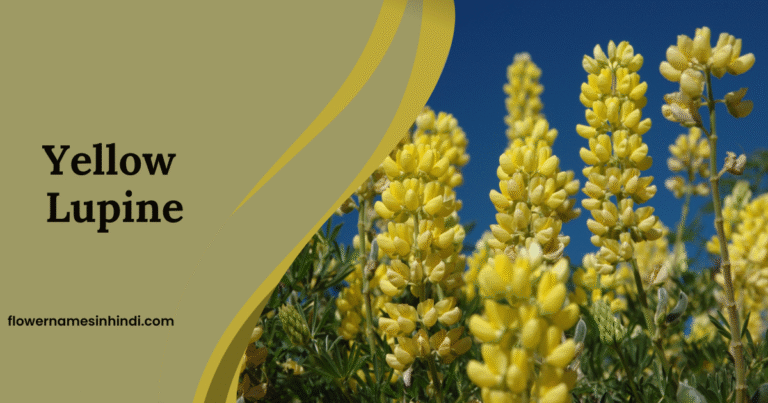
Yellow lupine, also called annual yellow lupin or European yellow lupin, grows as a tall, spiky shrub with clusters of flowers from pale yellow to deep gold. It belongs to the Fabaceae family and adds beauty to wildflower gardens and meadows.
Yellow lupine grows best in direct sunlight and sandy, well-drained soil. It needs very little care but benefits from some extra water during dry seasons. The plant also improves soil health because it captures nitrogen from the air and changes it into a form that plants can use. This makes it a great choice for enriching gardens or vegetable plots.
| Botanical name | Lupinus |
| No. of species | About 200 species |
| Symbol | Inspiration, creativity, and beauty |
| Blooming time | Late spring to early summer |
| Origin/ Native to | North America, Europe, and parts of Africa |
Conclusion of Flowers that Start with Y
Flowers starting with Y bring a special charm to gardens with their unique looks. From the bright Yellow Bell to the soft Yarrow, they can brighten up any space. These flowers not only add beauty but also attract pollinators that keep your garden healthy. Choose the ones that grow well in your area to enjoy their full beauty.
Related articles:


